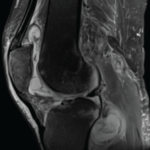MTB played another critical role that is often overlooked: it helped shape the intellectual creativity of immunology research in the latter half of the 20th century, moving immunology beyond the study of infectious diseases and into the realm of cellular immunity and other host responses.12 The story begins with the formulation of Freund’s adjuvant, a milky yellowish fluid that enhances the body’s response to a foreign antigen. It was named for its creator, Jules Freund, MD, an investigator who was pursuing several lines of research into creating a vaccine against TB.
Dr. Freund had been experimenting with several extracts, trying to elicit a host response to MTB. It was apparent that an adjuvant was required to emulsify the dead mycobacteria and induce a powerful, but controllable, immune reaction in the host. After countless trials, Dr. Freund and his colleagues settled on mixing small amounts of killed MTB with a water-miscible fat similar to lanolin, which would then be emulsified in paraffin oil.12
The results were startling. The guinea pig host’s immune response was so intense at the site of the vaccination that there would be considerable tissue necrosis, no doubt due to the release of potent cytokines, such as TNF and others. It became apparent that creating a safe vaccine was a pointless pursuit. However, the researchers observed something remarkable: When they added another foreign antigen to this emulsion—horse serum for example—the host would mount a robust immunologic reaction to this added antigen, with the production of an intense antibody and cellular immune response. In fact, this seminal research led to the first described animal model of an autoimmune disease, experimental allergic encephalomyelitis, a surrogate of multiple sclerosis in 1944.13
This single discovery dramatically turned the study of immunology from being one that had been exclusively focused on the host’s response to infectious diseases to one that investigated the host’s immune response to self and non-self antigens. In a matter of years, multiple animal models of autoimmunity were created, ranging from adjuvant arthritis, to experimental orchitis, thyroiditis and every itis in between. Cellular immunology was born.
To quote Sir Macfarlane Burnet, the Australian immunologist whose research on clonal selection was awarded the Nobel Prize in Medicine in 1960: “Modern experimental work on the production of models of autoimmune disease in laboratory animals is almost wholly the creation of Freund’s complete adjuvant.”12
Although it has been a formidable foe, sometimes MTB has served as an able ally. In a nutshell, to paraphrase the pathologists, MTB delivers all the flavors of immunology—the sweet, the sour and the bitter.


